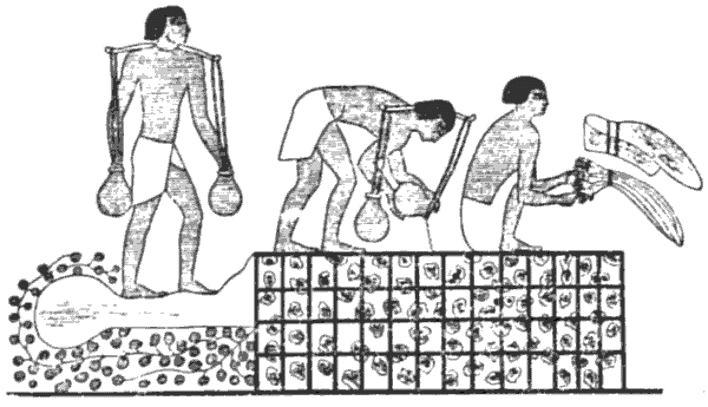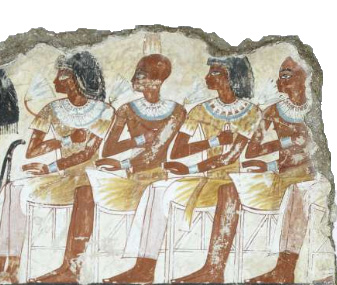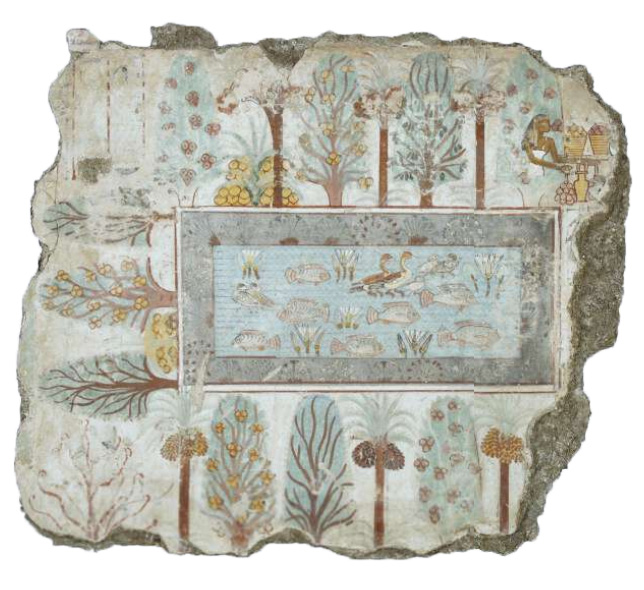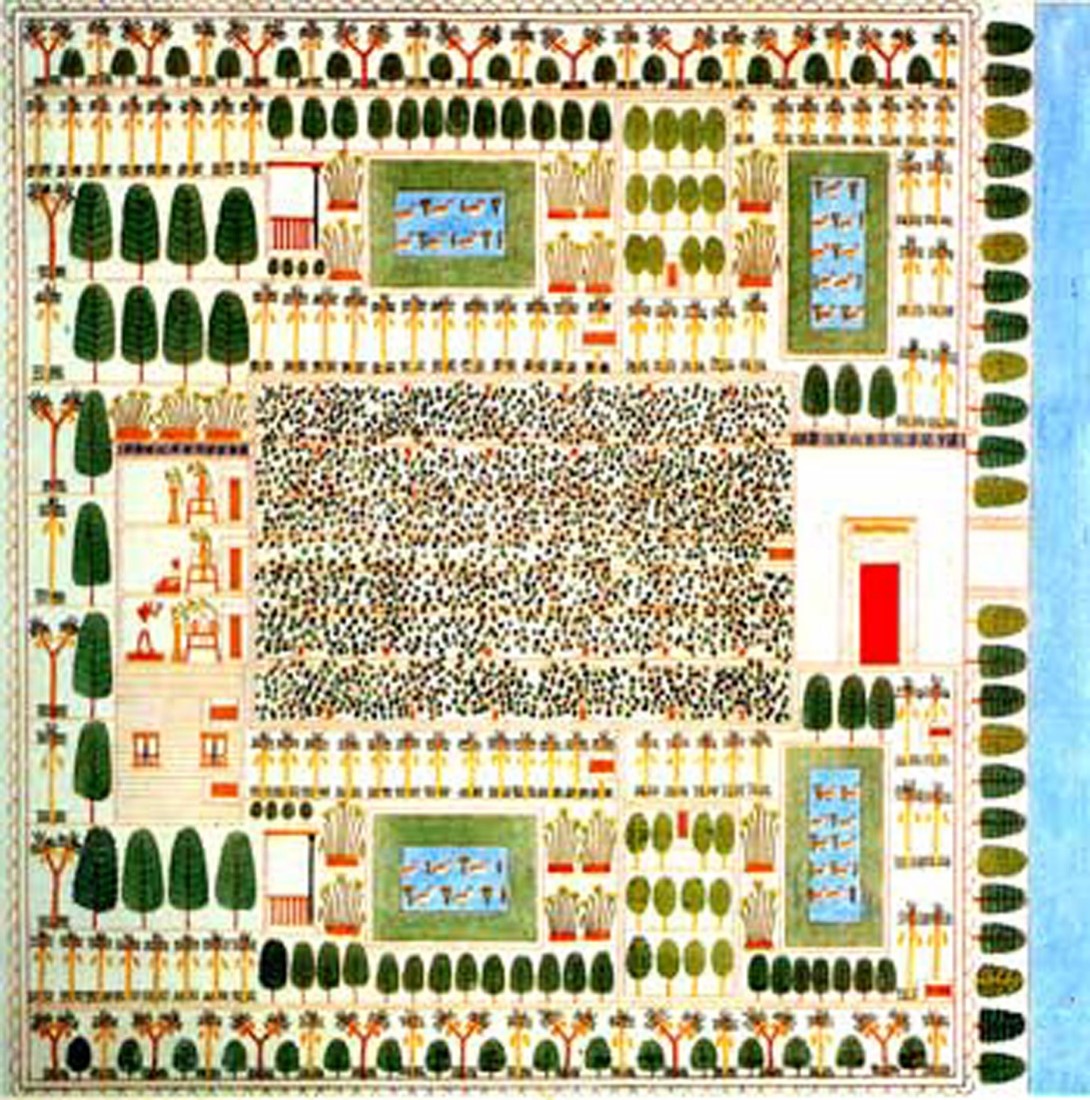Love Gardening? Thank the Egyptians.
Let's take a look at ancient cultures as it relates to modern day gardening.

If you’re reading this newsletter, you probably love gardening. Or at least love to visit gardens. And you aren’t alone. Ancient peoples loved gardens too. The Egyptians probably didn’t invent gardening, but some of the world’s oldest documentation of gardens can be found in ancient Egyptian relics. We know a lot about their lifestyle and society because of their preserved writings and temple/tomb inscriptions. In fact, about 2,000 species of flowering and aromatic plants have been found in these tombs.

There were many types of gardens in their society, including temple gardens, funerary gardens outside of tombs, and royal palace gardens. The wealthy citizens often had formal gardens too. Many of the gardens were useful – containing plants they could either eat or use for medicine, fiber, or perfume.
For instance, in a 1900 BCE tomb (pictured right) we see Egyptians irrigating and harvesting a vegetable garden. The two leftmost gardeners are carrying pots to irrigate the crop while the other gardener ties onions into bundles. Archeological evidence shows that common vegetable crops included garlic, onion, lettuce, and cucumber.

Fruits were also very popular in the Egyptian garden. The date palm, fig, grape, pomegranate, olive, and even apple were all grown before 332 BC. Shown in the top picture are grapes being collected from an arbor (ca. 1500 BCE). But ornamental plants were also grown for their beauty and adornment. Many paintings show Egyptian women smelling flowers or wearing floral collars (pictured right, ca. 1350 BCE). Common flowers were lotus (water lily), poppy, safflower, and Oriental larkspur to name just a few. Herbs, spices, aromatic, and medicinal plants were also grown, and included coriander, cumin, dill, fennel, mint, mustard, rosemary, and thyme.
Water features were also very common in gardens, like that pictured below from the Tomb of Nebamun (ca. 1350 BCE). Here a rectangular pond depicts an abundance of fish along with ducks and lotus, all surrounded by date palms and fruit trees. And for the wealthy, these gardens could be quite elaborate and have multiple pond features. Pictured last is a garden plan for Amenhotep, an Egyptian high official (ca. 1350 BCE). The plan included a square plot of land surrounded by ornate walls, their home shaded by trees, multiple water features, a vineyard in the middle, and numerous other trees, shrubs, and flowers.
So the next time you are gardening or enjoying a garden, you can walk like….er, garden like an Egyptian.





 Print
Print Email
Email




